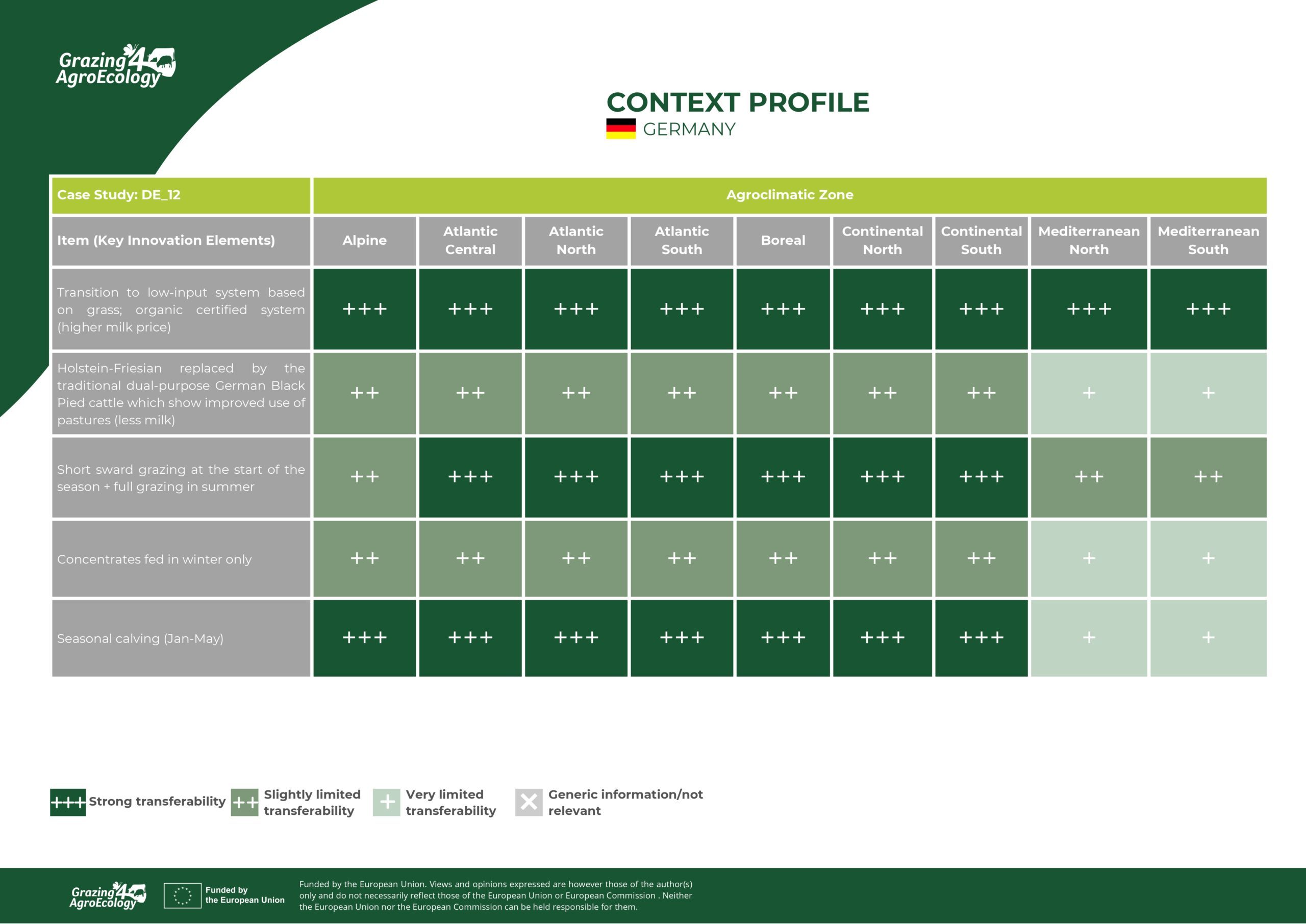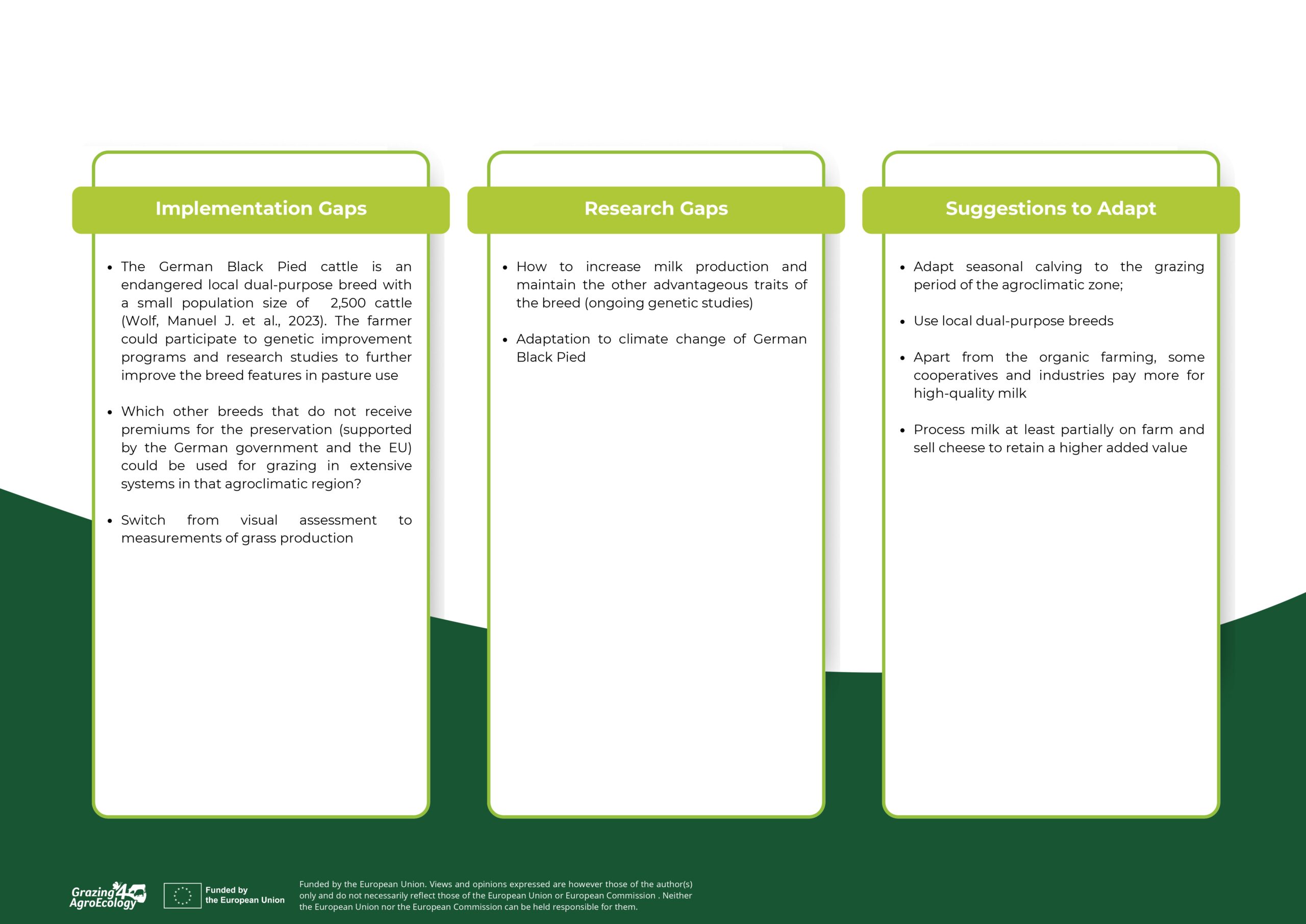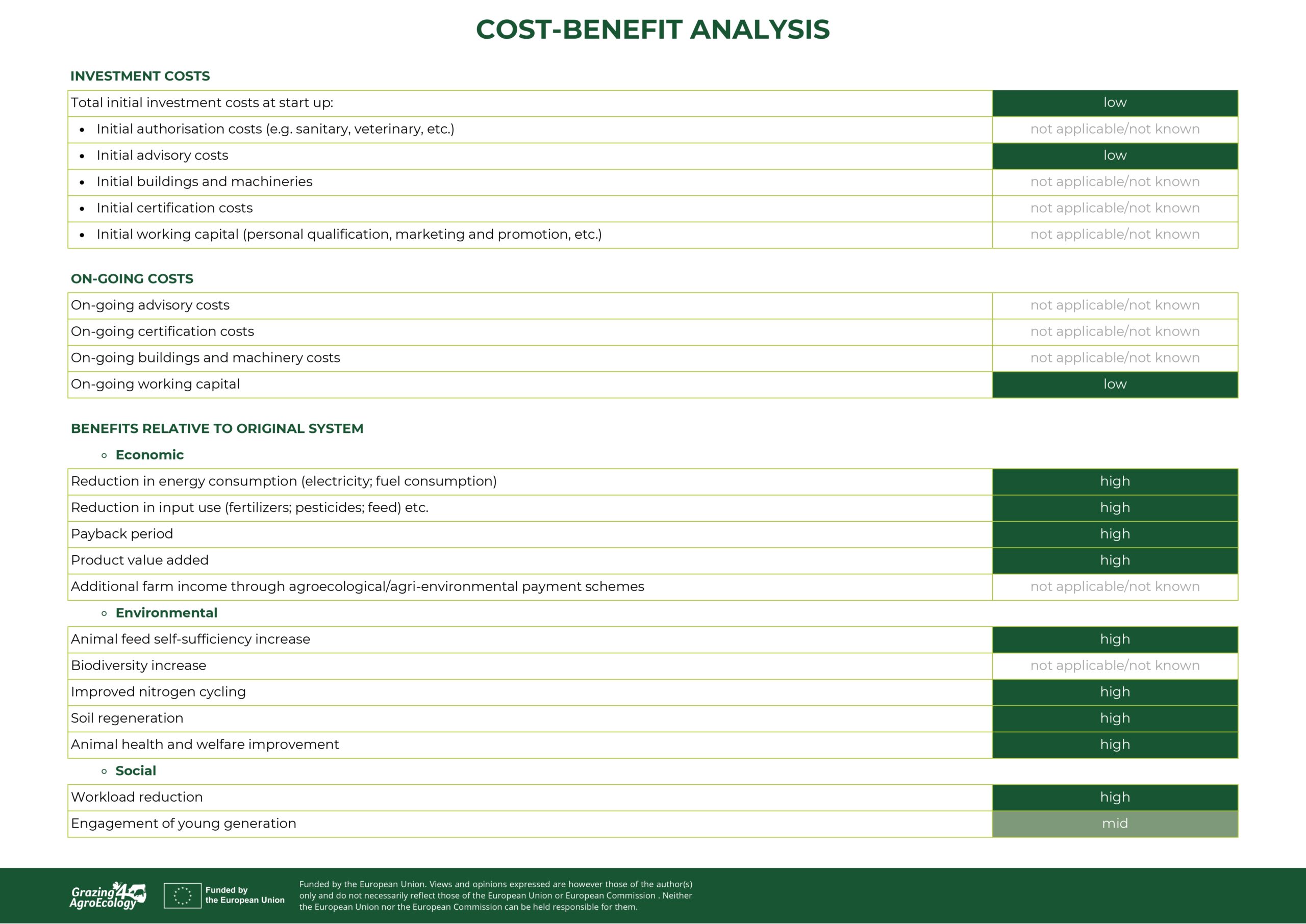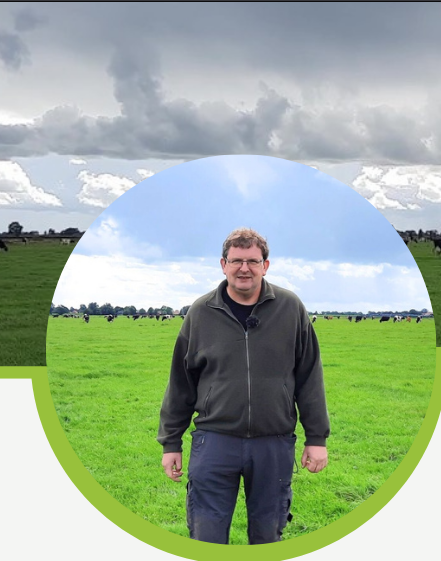Matching genetics and concentrate-reduced feeding for an efficient pasture utilisation
Description
Practice abstract
In the coastal region of North Germany, Johannes G. and his family manage almost 170 ha of grassland with around 160 dairy cows. In order to reduce the costs for feed and the dependency on external feed market prices, he transitioned his formerly intensive and high-input production to a low-input production system.
The main approach was therefore the transition of the former herd of Holstein-Friesian to a new herd of traditional dual-purpose German Black Pied cattle. This local breed has a lower milk volume but is known for being a very efficient grass protein utiliser. To maximize the herd’s energy intake from the pasture, the farmer follows a short sward grazing system and full grazing in summer. He managed to drastically reduce the use of concentrate feed and keeps using it only in winter to lure the cows into the parlour. To match the best timing of vegetation period and energy demand of lactating cows, he shifted to block calving with most cows calving between mid-January and mid-May. Since the quality of their pastures and the breed match perfectly, also animal health has improved compared to the previous high-input system.
Of course, the local dual-purpose breed yields less milk volume than Holstein-Friesian cows, but as a certified organic farm they usually also obtain a higher milk price.
Context profil





Additional information
| Main domain of innovation | Breeding advance |
|---|---|
| Agroclimatic area | Atlantic central |
| Climate | Moderate rainfall |
| Soil Type | Qley |
| Management | Pasture beef |
| Technical | Easy |
| Finance/investment | Low |
| Market | Local-rural |
| Social | Full-time farmer |
